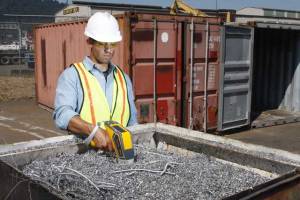The latest incident of a severe radioactive leak at Japan’s Fukushima Daichii nuclear plant three years ago following a disastrous earthquake and tsunami has brought the topic of radiation shielding and how to protect oneself from radiation to the forefront of the world’s attention. However, for policy makers and companies working in industries that frequently deal with radiation and radioactive materials these were not new concerns. In fact, they have long given special attention to these matters. Companies know fully well that exposure to radiation can inflict great harm to their workers’ health and safety in addition to the working environment and equipment. Policy makers have long been concerned about the impact of radioactivity on the general public and the living environment. Therefore, radiation shielding has become a central part of operating equipment for these companies, and an important regulatory mandate that the government tries to enforce.
It comes as a surprise to many people to know that we are all surrounded by radiation from a variety of sources, including natural sources such as cosmic radiation, and artificial sources such as electronic devices and medical equipment. Anyone with a basic understanding of radiation protection knows the famous TDS (Time, Distance, Shielding) formula used to determine the amount of radiation penetration: the time duration of exposure, distance from the radioactive source, and the amount of shielding available. The use of radiation shielding is very important as it absorbs radiation and stops it from penetrating the object, and it is required by law to employ radiation shielding when where radiation poses as a potential threat.
In order to select the most appropriate materials for radiation shielding, various factors need to be taken into consideration. In theory, as long as the materials have the desirable thickness, they can be used as shielding materials. Another deciding factor is their ability to attenuate radiation, slow it down or block it, which depends on the density of the shielding material. Besides, the material should also meet the demands for weight, resistance to radiation corrosion, durability, consistency of shielding capability, ease of fabrication, and cost efficiency. When selecting the right radiation shielding material, a balance must be made among those factors. In addition to the aforementioned criteria, the choice of shielding materials also depends on the type of radiation because different materials work best with different radiations.

• Alpha and Beta radiations: These radiations travel for just a short distance, and only need a thin layer of light material or heavy clothing to cover.
• Neutron radiation: Neutron radiation is a very difficult one to completely deflect, as depending on its energy level, it generally can penetrate through thick materials. Neutron shielding should also attenuate the secondary radiation such as gamma radiation. The most favorable shielding material should contain hydrogen.
• Gamma and x-ray radiation: To protect an object from gamma rays, it is necessary to use thick and dense shielding material. To this end, lead is a likely candidate since it is among the the cheapest and most readily available high density metal in the periodic table.
Many people, however, have recently raised concerns regarding the use of toxic materials such as lead in many radiation shielding applications. Therefore, new non-toxic high density materials are being introduced such as polyethylene-based materials, and high density composites of tungsten or boron. As a result, there are now more options for radiation shielding materials on the market than ever before.






0 comments:
Post a Comment